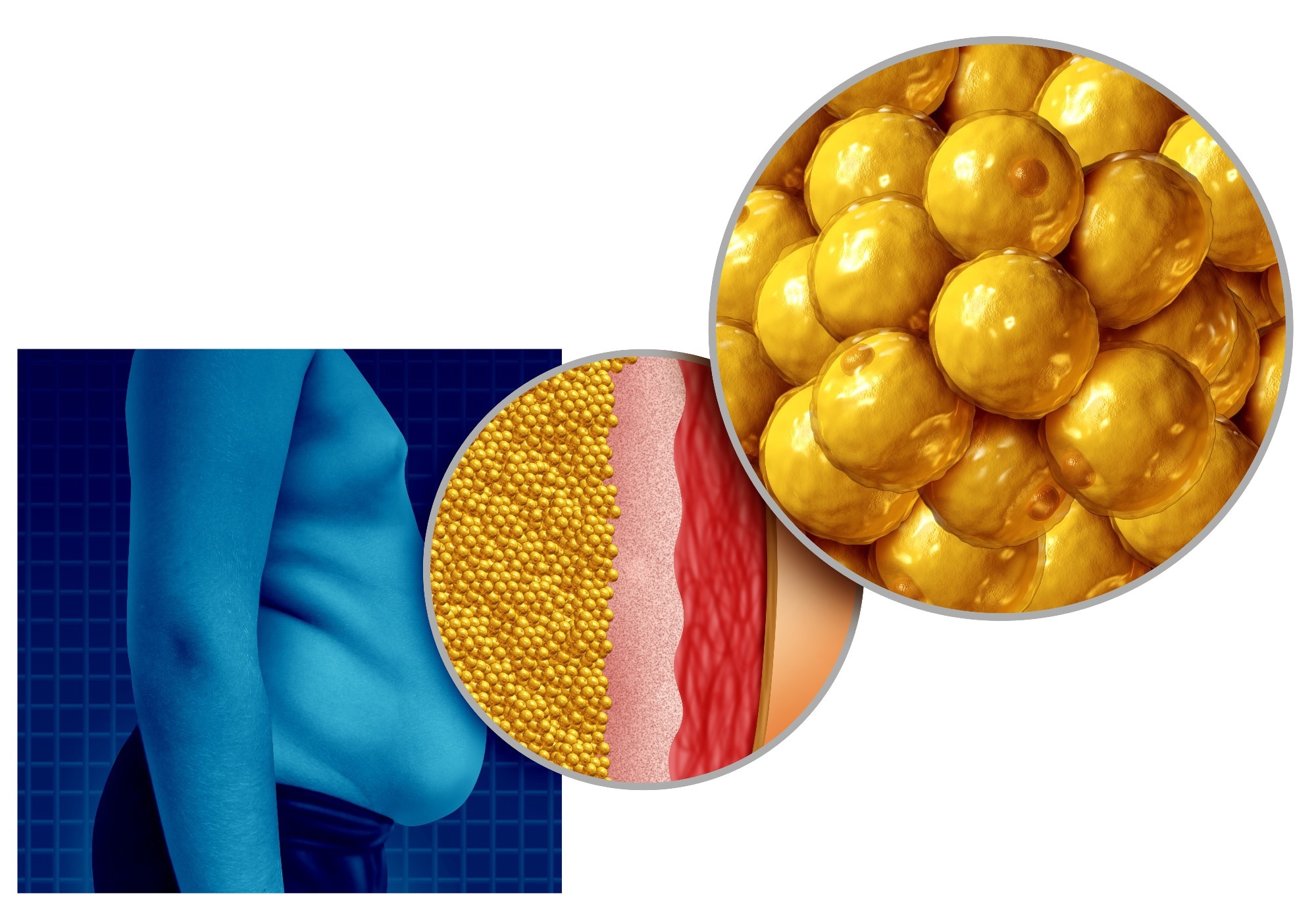In a recent study published in the journal Philosophical Transactions of the Royal Society B, researchers discuss diet-induced thermogenesis and determine whether reduced uncoupled protein 1 (UCP1) activity in brown adipose tissue could cause obesity.
 Study: Brown adipose tissue: can it keep us slim? A discussion of the evidence for and against the existence of diet-induced thermogenesis in mice and men. Image Credit: Lightspring / Shutterstock.com
Study: Brown adipose tissue: can it keep us slim? A discussion of the evidence for and against the existence of diet-induced thermogenesis in mice and men. Image Credit: Lightspring / Shutterstock.com
Background
Brown adipose tissue uses food or stored energy to generate heat, a process that may occur even when there is no need for thermoregulation. This phenomenon, otherwise known as diet-induced thermogenesis, has led many researchers to investigate how this process can be manipulated to combat the current obesity epidemic.
Previous research indicates that obesity may arise due to reduced brown adipose, which is also indicative of low diet-induced thermogenesis. Despite these observations, many researchers have questioned the existence of diet-induced thermogenesis, as it is contrary to the idea of maximizing energy efficiency.
The generally accepted hypothesis is that this process would facilitate survival on a diet low in proteins; however, this has not been proven experimentally. In fact, high-fat diets contain sufficient protein and still induce diet-induced thermogenesis, which raises the possibility that this phenomenon may arise to counter increased adiposity.
Exploring the phenomenon of diet-induced thermogenesis in mice is challenging, as many animals produce a thermogenic response to eating during the digestion of food and the transfer of energy into lipids. As compared to this natural process, the notion of diet-induced thermogenesis as an evolutionary response to prevent obesity must occur only when needed and when an organism consumes excess energy.
Metabolic experiments in mice
In mice fed a high-fat diet, the increased obligatory diet-induced thermogenic response is higher than in chow diet-fed mice. Although both mouse models consumed similar quantities of food, the high-fat diet comprised a much higher ratio of fats than the carbohydrate-rich chow diet, with fats associated with lower obligatory thermogenesis.
Thermogenesis, which is a direct response to feeding, appears to depend on the presence of UCP1. For example, wild-type mice exhibit an increased thermogenic response compared to the absence of this response in UCP1 knockout mice.
Although there is a positive correlation between obesity, the recruitment of brown adipose tissue, and increased amounts of UCP1, UCP1 is only partly efficient in regulating energy levels under homeostatic control. Moreover, studies in mice have not indicated that the absence of UCP1 led to obesity.
Furthermore, researchers have neither found evidence of spontaneous obesity in UCP1 knockout mice on different diets and under varying genetic backgrounds nor obesity-protecting effects of UCP1 ablation in wild-type mice.
Brown adipose tissue-mediated diet-induced thermogenesis in humans
In humans, previous studies have observed a low amount of brown adipose tissue in obese people. Studies using radioactive oxygen have confirmed the meal-induced activation of human brown adipose tissue. In humans, glucose uptake in brown adipose tissue is also influenced by insulin stimulation, thus indicating a potential false negative correlation between brown adipose tissue activity and obesity in humans.
To date, no genome-wide association study (GWAS) for obesity-related issues has identified the UCP1 gene in humans. Although the A3826G polymorphism in the upstream region of the UCP1 gene has been associated with higher expression of UCP1, its observed effects have been inconsistent.
Likewise, researchers have not identified a UCP1 knockout gene in humans. The metabolic outcome of mutations in the UCP1 gene also remains unclear.
Conclusions
Diet-induced thermogenesis in mice may be observable under certain conditions, as demonstrated by the absence of brown adipose tissue contributing to obesity in UCP1 knockout mice.
Previous studies have estimated that total thermogenesis from brown adipose tissue in an average adult man corresponds to a body weight change of up to 10 kilograms (kg) each year. Thus, diet-induced brown-fat-derived thermogenesis likely occurs in humans and affects an individual’s risk of obesity, provided that other risk factors for obesity are also present.
Future studies are needed to investigate the obesity-inducing effects of alterations in UCP1 levels in murine models. Likewise, future human studies are required to determine the causation between obesity and reduced brown adipose tissue activity.
Source:
Journal reference:
- Nedergaard, J., von Essen, G., & Cannon B. (2023) Brown adipose tissue: can it keep us slim? A discussion of the evidence for and against the existence of diet-induced thermogenesis in mice and men. Philosophical Transactions of the Royal Society B. doi:10.1098/rstb.2022.0220